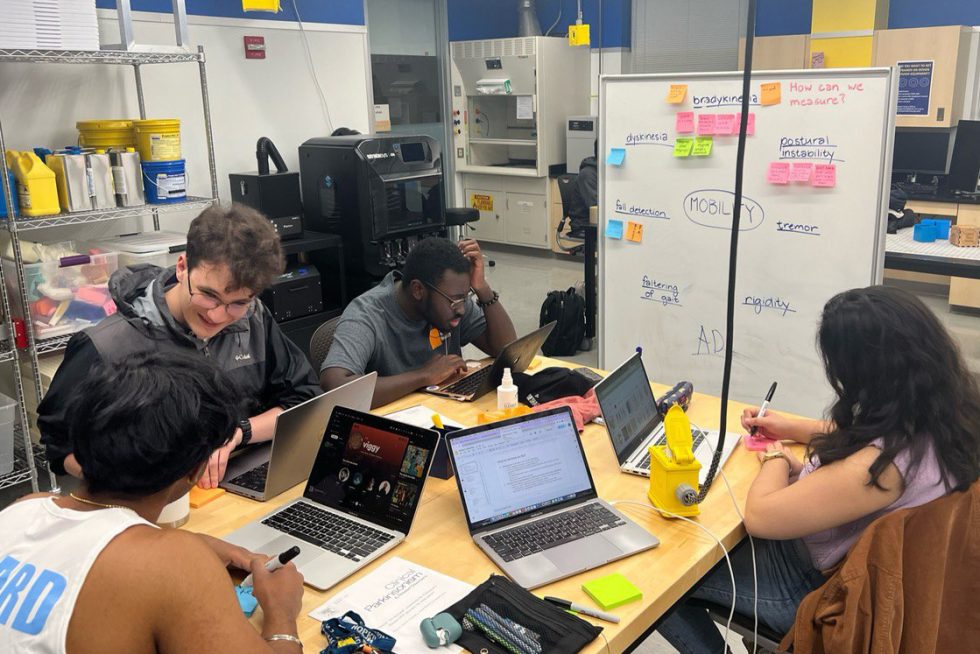By Holly Paesch
A student team in the Department of Biomedical Engineering has developed a signal processing algorithm that they hope will someday help clinicians understand how well medication is working for patients with Parkinson’s, a neurodegenerative disease that affects an estimated nine million patients worldwide. The Parkinetics Design Team will present its approach on May 1 at the Whiting School of Engineering’s Design Day.
The Parkinetics Design Team initially aimed to develop a way to distinguish Parkinson’s disease from other similarly presenting movement disorders, but after interviews with stakeholders, they pivoted to address the need for better data on how patients respond to medications like Levodopa so dosages can be adjusted effectively.
The team plans to use small motion-tracking devices called inertial measurement units (IMUs) to record the movements of patients as they perform everyday tasks, such as brushing their teeth, writing with a pen, and combing their hair. The students will then analyze and process movement data and share reports with clinicians, providing actionable feedback on medication adjustment.
“Our team is very entrepreneurial and likes to dream big to tackle projects that seem like they will change the world. Parkinson’s is a widely prevalent neurological disease, so we saw the potential to impact hundreds of thousands of patients across the world,” said Viggy Vanchinathan, leader of the Parkinetics Design Team.
Parkinson’s patients suffer from debilitating motor symptoms such as tremors, rigidity, and slowness or freezing of movement. Levodopa, a medication often prescribed to alleviate those symptoms, needs to be adjusted regularly to improve its effectiveness. However, getting accurate information about how the patient responds to their current dose of that drug is challenging and relies largely on unreliable self-reporting which could be incomplete or inaccurate.
Vanchinathan says the solution was particularly exciting for the team because of their microelectronics and signal processing skillset. Initial testing involved simulating Parkinsonian conditions, but the team members are now working with clinicians at the Johns Hopkins School of Medicine to recruit actual patients for testing.
The team members have found the design process challenging and rewarding.
“Design Team is a very open-ended process that you can take in any direction. But usually, the best course of action is brainstorming with your team on the pros and cons, choosing a direction, and going with it,” said Vanchinathan.
The Parkinetics team also includes Jaya Hamkins, Nana Barimah Osei-Owusu, Matthew Farah, Ramya Palani, Arihant Singh, Chloe Zhang, and Roma Desai.



